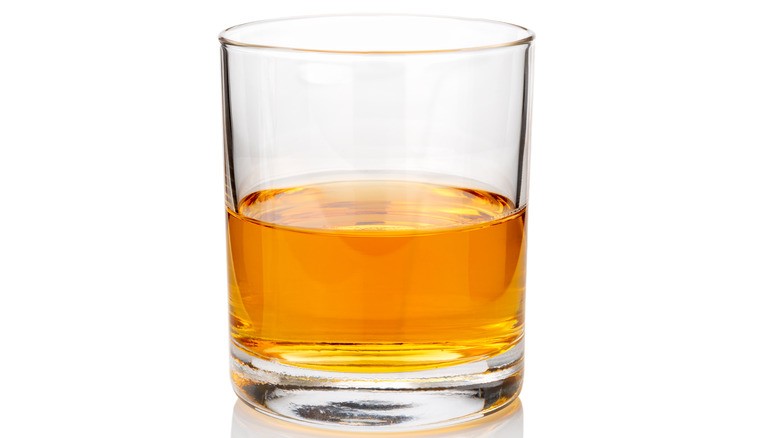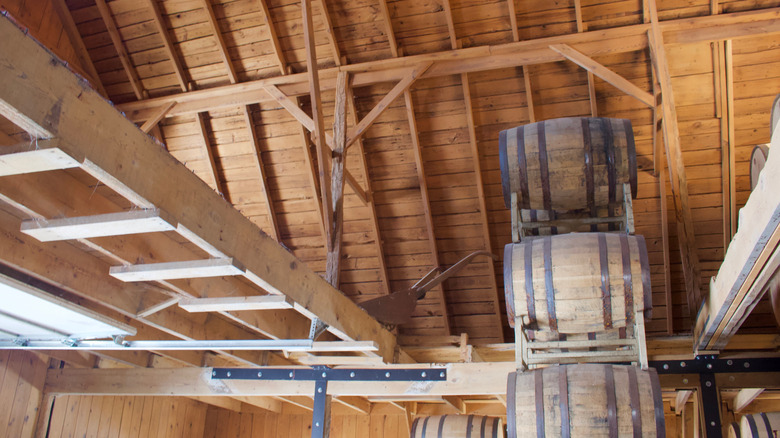What 'Crow's Nest' Means When Shopping For Quality Bourbon
If you're searching for the perfect gift for the bourbon lovers in your life, Crow's Nest might just do the trick. Granted, get your wallet ready; you're not simply buying a bottle, you're investing in an entire barrel.
Barrels of bourbon have become a sought-after purchase, particularly for rare blends than can be tricky to track down. Whiskey connoisseurs have used online platforms to buy libations from trusted distillers, and barrels can be the perfect means for larger groups to taste more exclusive spirits. A single barrel can range from $5,000, crawling up towards the $15,000 range, but bourbon societies jump at the chance to sample selections directly from rickhouses, warehouses where whiskey is stored to age.
Also known as rackhouses, these warehouses keep barrels on racks so that each barrel is exposed to air. Storage matters when it comes to the maturation of bourbons, and these whiskey-storing buildings aren't necessarily able to protect the barrels from temperature fluctuations due to climate. Nor do producers necessarily want to.
A taste of the top barrel
Barrels placed on the upper racks inside rackhouses expand with heat and constrict during cooler months, while lower-placed barrels undergo less temperature fluctuations, resulting in longer-aged whiskeys. While such variables may sound risky, these changes in climate can result in richer, more diverse tastes for connoisseurs to savor.
"Those peaks and troughs of temperature are really going to drive the whiskey into the wood, and it's going to increase the angels' share, so you get a much faster, more powerful maturation," Master distiller Conor O'Driscoll explained to Whiskey Advocate.
When you are ready to make the financial commitment and go all in for a barrel, look for the Crow's Nest. This is the name distilleries use to reference the top levels of whiskey-storing warehouses. Since barrels placed in the upper parts of rickhouses experience more extreme temperature fluctuations, this is where some of the most complex, nuanced barrels of bourbon are located.

